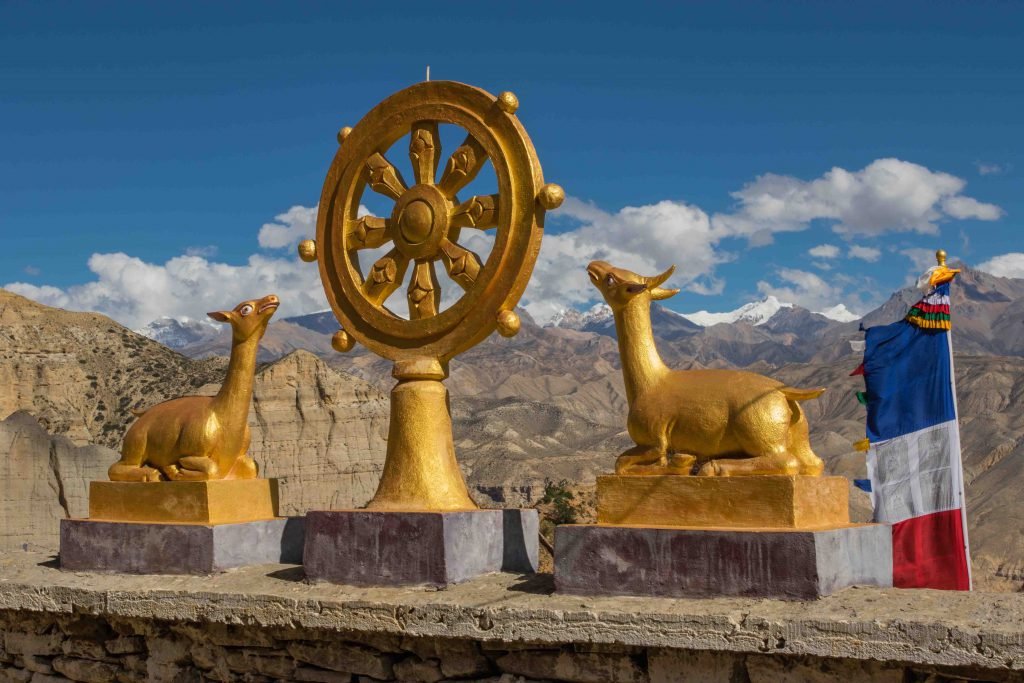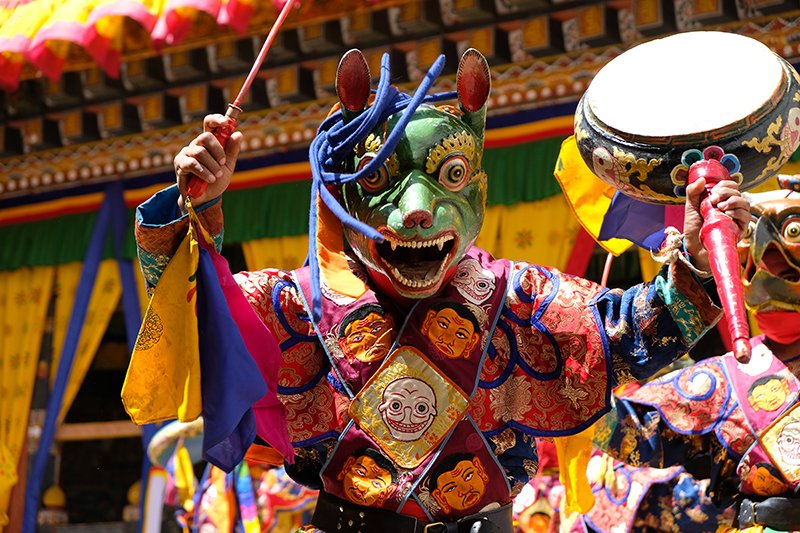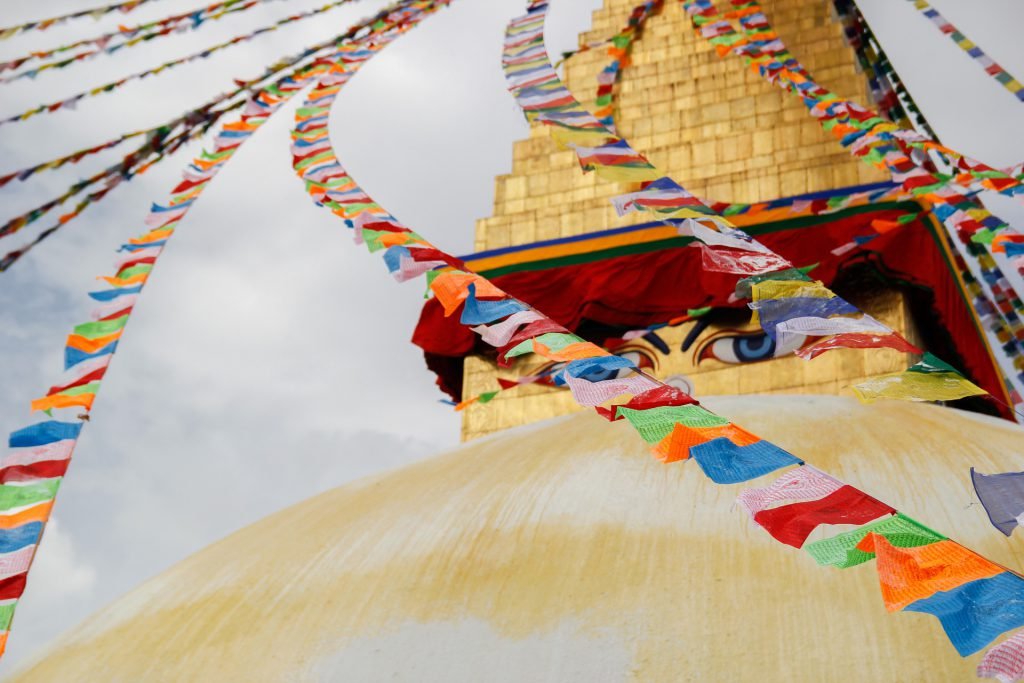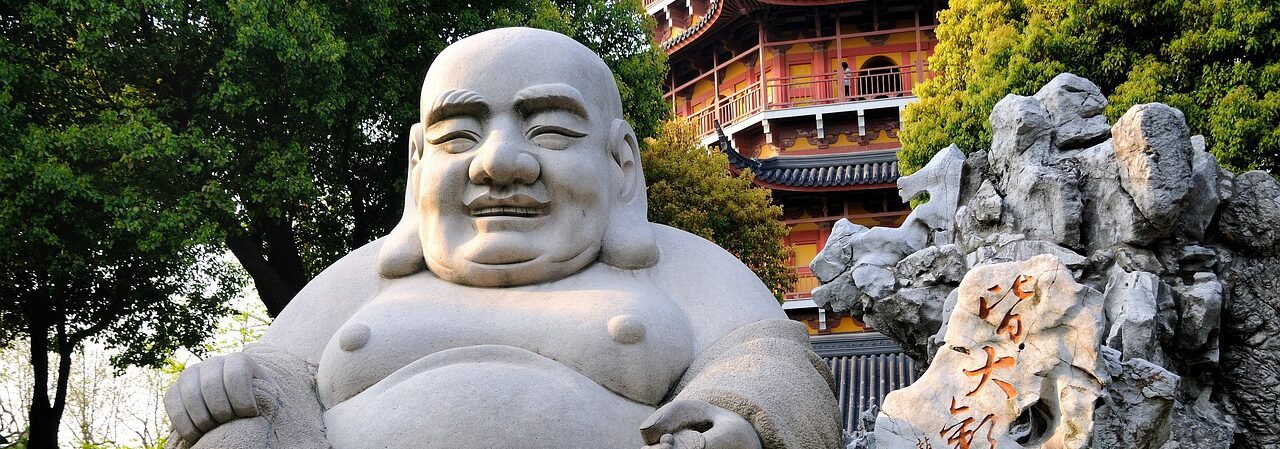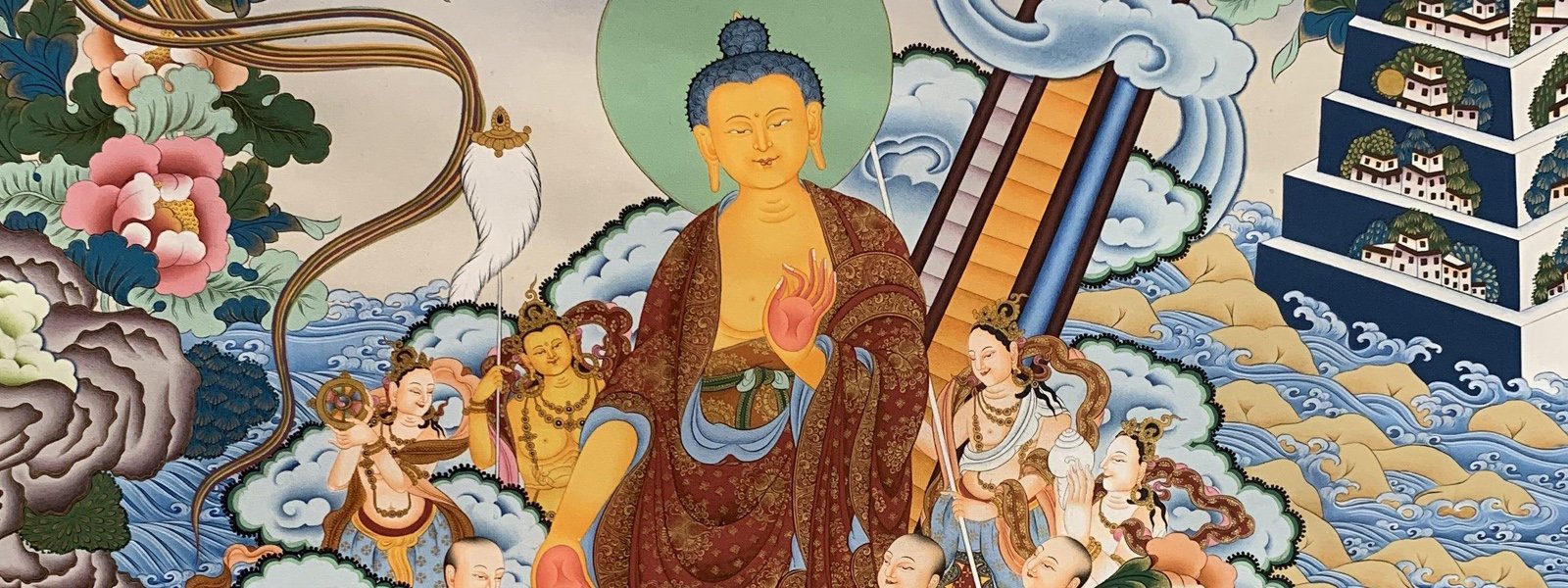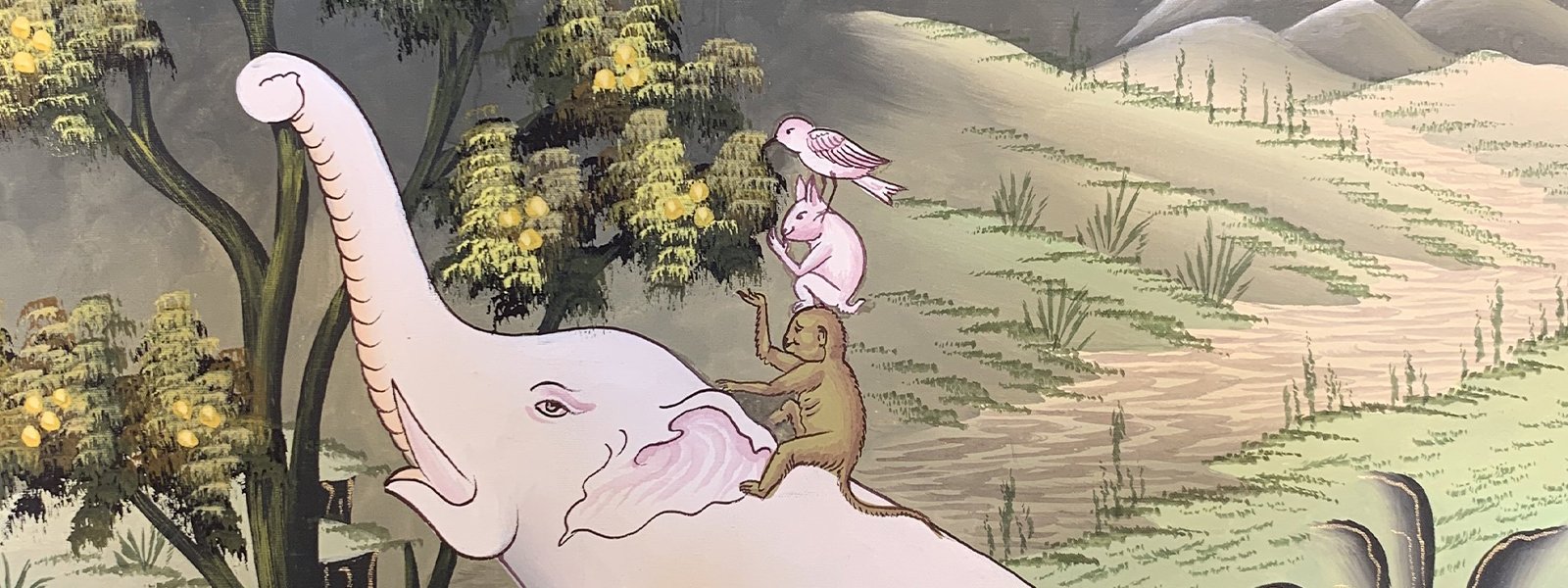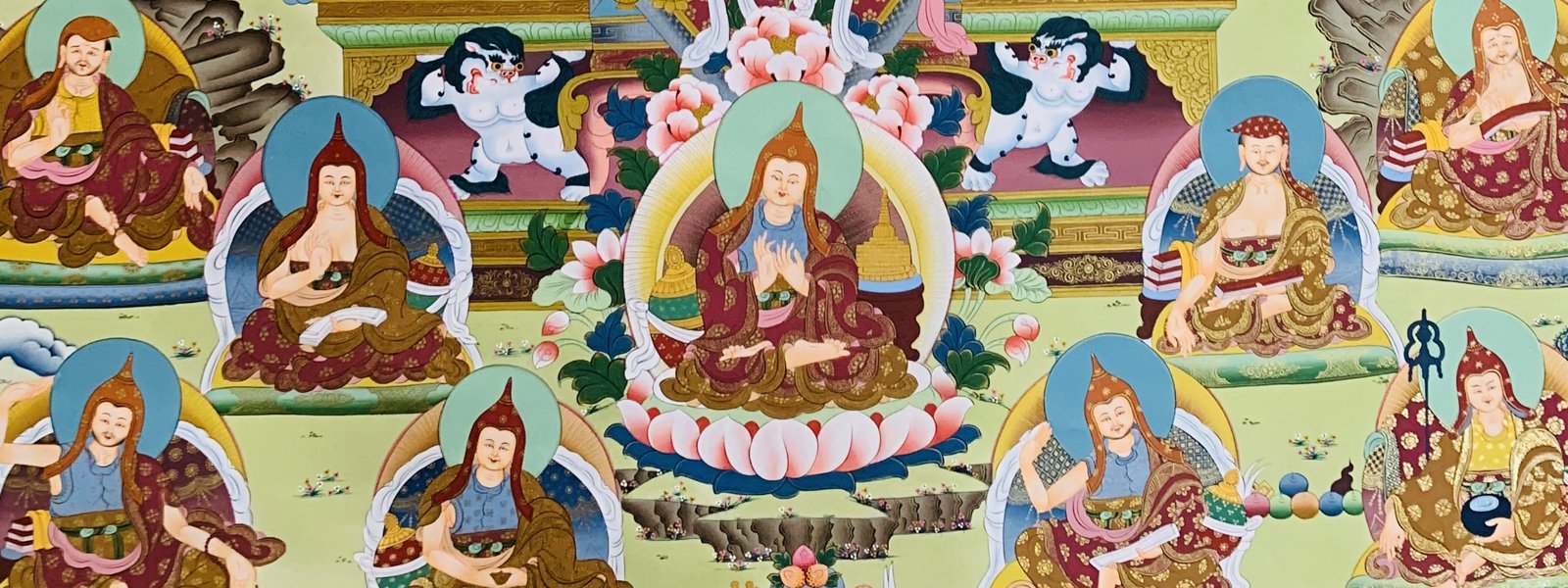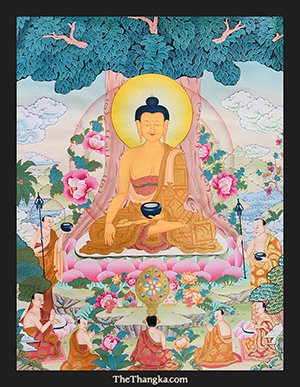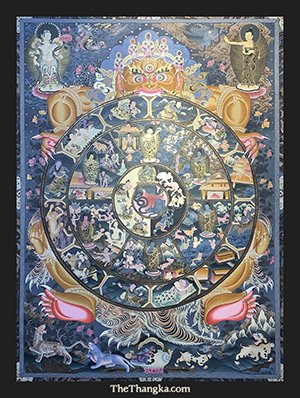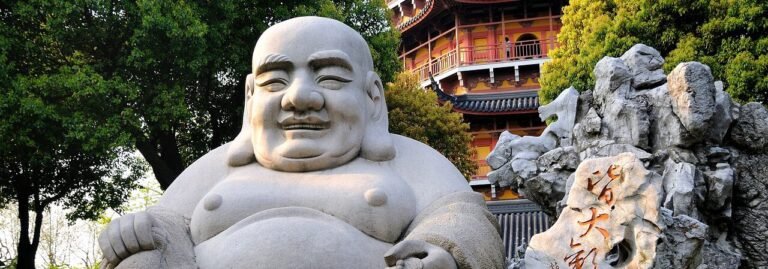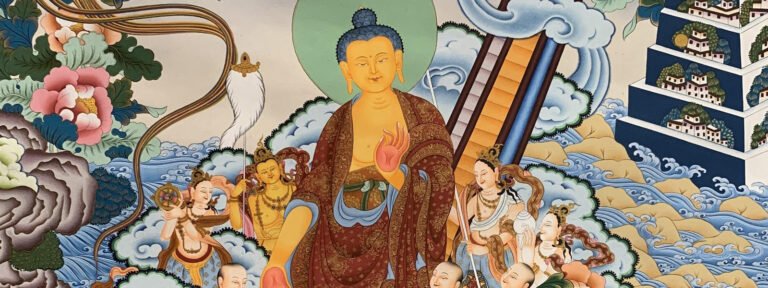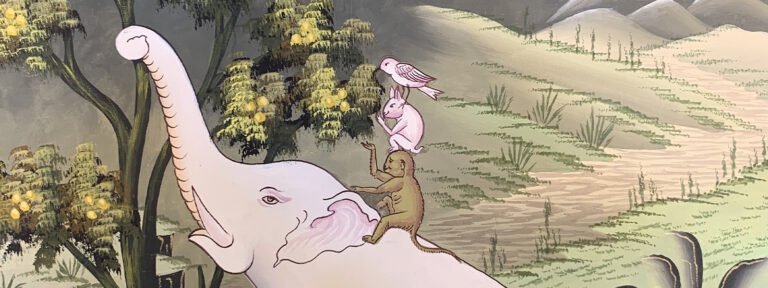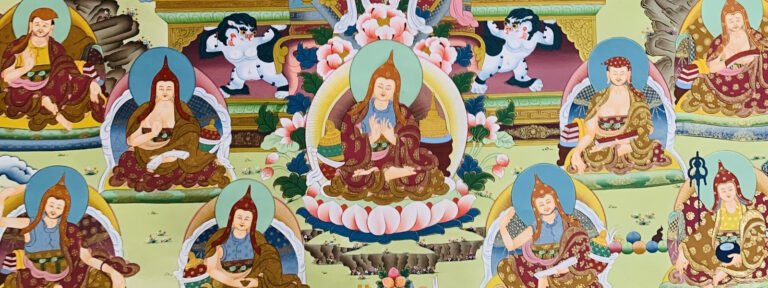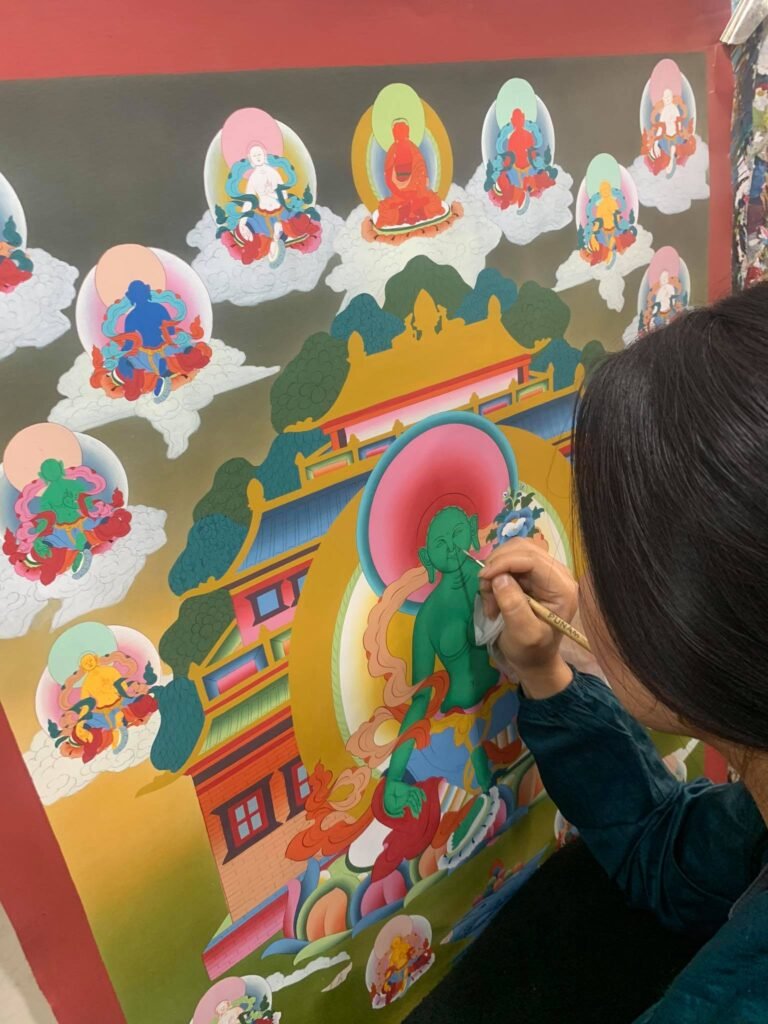The Cham འཆམ། dance is a lively form of dance that is held during certain Buddhist festivals, such as Losar (the Tibetan New Year), and thought to bring merit to all those who take part and witness the dance.
In the 20th Century Western world, the dance was mistakenly referred to as the “devil dance” due to the costumes worn by those performing.
Where did the cham dance originate?
The cham dance was first performed in Tibet more than 300 years ago in celebration of the birthday of Guru Padmasambhava. Now, cham dances are performed to celebrate a number of different holidays and festivals.
Traditionally, dance was used as a way for religious figures to tell stories to people in a time when most of the population was unable to read or write. Because of this, cham dances became an important way of spreading teachings and blessings.
What does the cham dance look like?
During the cham dance, monks will wear colorful costumes whilst dancing to the sounds of traditional instruments. There is a very particular sequence to the dance that requires those performing it to be strong and able to dance whilst wearing heavy masks.
The cham dance itself is seen as a form of meditation, whereby those dancing are imagining themselves as an embodiment of the deities.
There are several subjects and cham dances to witness, some of the more common ones are described below.
Wrathful Protectors (Dharmapalas)
The protectors of Dharma in Tibetan Buddhism – their fearsome looks are intended to scare evil spirits.

Skeleton Dance
In Tibetan Buddhism, death is seen as a necessary step towards enlightenment as opposed to being a bad thing. The skeleton dance is intended to be a representation of death and impermanence.
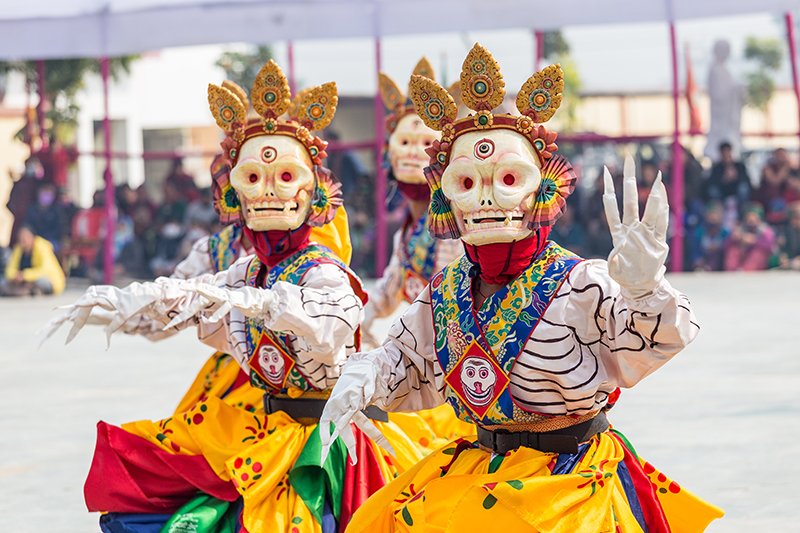
Guru Dance
The cham dance represents certain aspects of the life of Guru Padmasambhava. The Guru Dance is a performance led by monks dressed as the 8 manifestations of the Guru.
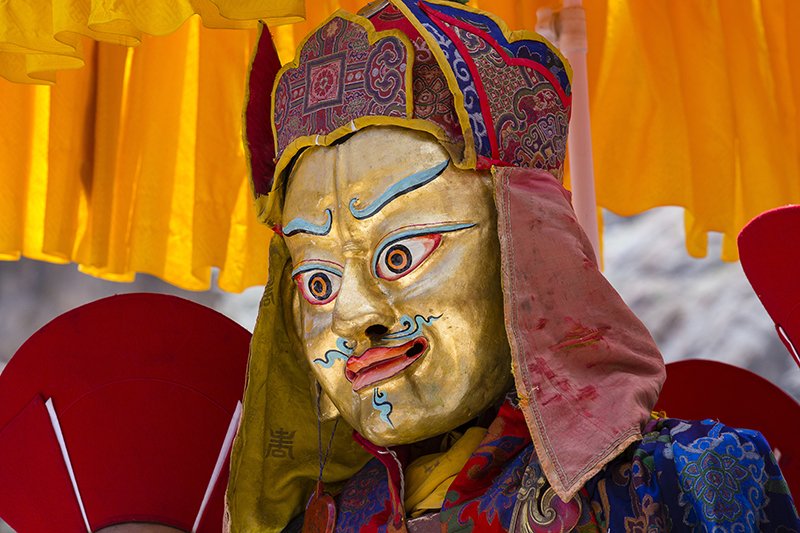
Black Hat Dance
The Black Hat dance is a Vajrakilaya རྡོ་རྗེ་ཕུར་པ་ dance – the wrathful yidam deity who embodies the enlightened activity of all the Buddhas and whose practice is known for being the most powerful for removing obstacles and destroying negative forces.
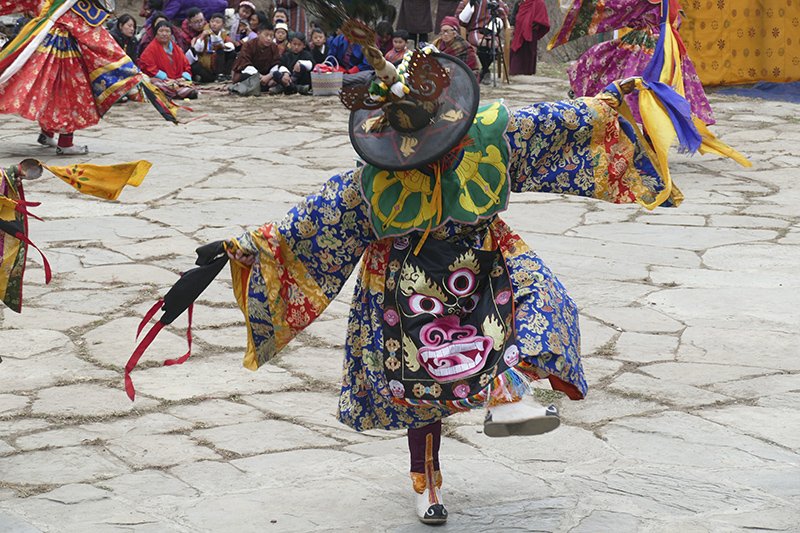
Deity Dance
This dance represents the suffering that all beings encounter in the form of obstacles and delusions.
Dancing in the Sky/Ritual Dance
A great source of empowerment, this dance is performed in a mandala with praise given to Buddha in 10 different directions.
What is the purpose of meditative dance?
Though beautiful to watch, there’s much more to cham dance than simply performing an entertaining spectacle.
“With the help of Cham, people can know the role of gods and devils, and understand the fruits of good and bad work.” – Abbot Konchok Namgyal
Cham, or the lama dance, is a form of meditation with the intention of liberating the minds of those witnessing the dance. It is a process of awakening the mind from negative thoughts and leading it towards awakening.
Sources:
- info-buddhism.com – The Murder of King Langdarma according to Tibetan Buddhist Sources
- Samye Institute – Gar Cham – Meditative Dance – “Lama Dance”
- Rigpa Wiki – Tashi Jong
- Wikipedia – Cham dance
